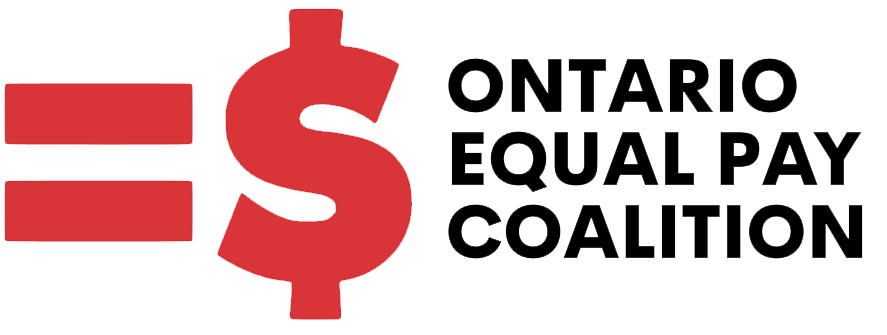Calculating the Gap
There are three main ways to calculate the pay gap*:
- Average annual earnings
This measure captures all women’s and men’s earnings, including contract and part-time work–a crucial variable as about two-thirds of part-time workers are women. According to Statistics Canada Survey Labour Income Dynamics (SLID)* data from 2011, the last year for which this data was available, Ontario had a 31.5% gap. Recently, Statistics Canada Canadian Income Survey** data for 2013 was released. This data, which used different methods than the SLID data, puts the Ontario gender pay gap at roughly 30%. - Full-time, full-year average annual earnings
This measure takes into account only full-time annual earnings. It does not account for part-time, or part-year (contract, for example) work. According to the 2011 SLID data, the gap is 26%. - Hourly wages
Another way to calculate the gap is by comparing hourly wages. As of 2011, the SLID data put the average hourly wage of women at 88% of the average hourly men’s wage (12% gap), with a negative trend over time; in 2015, the gap was recorded at 14%.
The Equal Pay Coalition uses the average annual earnings of all workers because it tells us the full picture of women’s economic inequality. It considers:
- The underemployment of women. Women make up the majority of part-time workers.
- Lack of access to affordable childcare for women who want full-time work.
- The segregation of women into lower paid job classes. In general, the higher the concentration of women, the lower the pay.
- Women’s dominance in minimum wage jobs.
- Women’s lack of access to collective bargaining.
Intersectionality
The pay gap is not just about gender. The gap increases substantially when intersecting with other forms of discrimination such as those experienced by:
- racialized women
- Indigenous women
- immigrant and migrant women
- women with disabilities
- elderly women
- women who identify as lesbian, gay, bisexual, trans, and queer (LGBTQ)
Discrimination in pay is not limited to one career or demographic. Pay discrimination affects women of all ages, races, and education levels – regardless of their family decisions.
Pay gaps are a human rights violation. It’s time to speak up.
*See sidebar for raw 2011 SLID data compiled by statistician Richard Schillington
** See sidebar for raw 2013 CIS data compiled by statistician Richard Schillington, and for the CCPA report, “Every Step You Take- Ontario’s Gender Pay Gap Ladder“.




